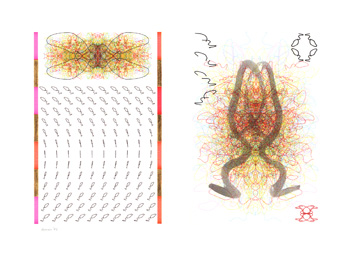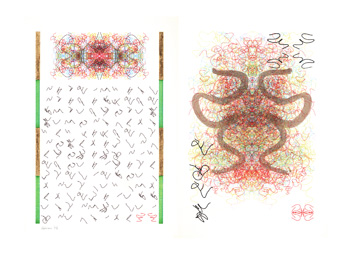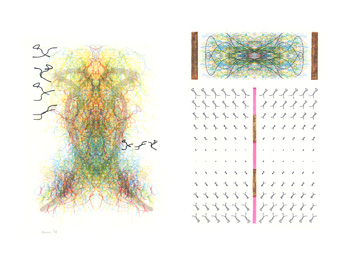|
APOCALYPSE
The term
“apocalypse” has its roots in a Greek term that literally means “lifting
of the veil” (ἀποκάλυψις apokálypsis),
a kind of “revelation”. In the Christian West it generally refers to
the Last Gospel of John, the “Apocalypse” foretelling the coming of
“the end of time”. More broadly an “apocalypse” may be viewed
essentially as a revelation of the future.
How did
these drawings come to be an “apocalypse” for me? When my pen plotter
first successfully executed one of my generative drawings I experienced
exhilarating wonderment. It was like a revelation or “lifting of the
veil”. Clearly “form-generating” procedures could not only generate
form ideas on a computer monitor; they could also drive a drawing
machine and do so with tireless precision. Following years working on
my “Magic Hand of Chance”, these drawings were hardly a blip on the tip
of an immense wave bringing vast cultural change. Almost any problem or
task whatsoever could be coded and executed with specialized machines.
With this “revelation” I knew we were on the threshold of a new age.
This wave would take us far beyond accounting and word processing. This
was a revolution that Peter Weibel named in retrospect as the
“Algorithmic Revolution” (Note 1). For me, these works, drawn in my electronic
scriptorium a few years later, stood for this “apocalypse”, a “lifting
of the veil” in my studio overlooking “Diamond Lake”.
|
Note 1.
The following Peter Weibel quote is from the
"Algorithmic Revolution Catalogue", 2004:
"A revolution
normally lies ahead of us and is heralded with sound and
fury. The algorithmic revolution lies behind us and
nobody noticed it. That has made it all the more
effective – there is no longer any area of social life
that has not been touched by algorithms. Over the past
50 years, algorithmic decision-making processes have
come very much to the fore as a result of the universal
use of computers in all fields of cultural literacy –
from architecture to music, from literature to the fine
arts and from transport to management. The algorithmic
revolution continues the sequencing technology that
began with the development of the alphabet and has
reached its temporary conclusion with the human genome
project. No matter how imperceptible they may be, the
changes this revolution has wrought are immense.”
Quoted from The
Algorithmic Revolution, Zentrum für Kunst und
Medientechnologie (ZKM), Karlsruhe, 2004, Exhibition
Catalogue, p.1.
www.zkm.de |
|
|
|
|


